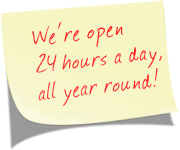
Most work isn't rejected or given bad marks because it is 'bad'. It is rejected or downgraded because it's not 'ready to read'. This is due to minor things like typos, grammar and spelling mistakes.
We don't mean that people deliberately break style rules, as this can sometimes be fine. In certain cases we need to break these rules to recognise the bigger picture. Language always changes with use, and we help it on its way. We are referring to instances where someone just didn't learn the style rule, got confused or overlooked the error during the proofreading stage.
Supaproofread.com started editing and proofreading documents in 2005. Looking back at many manuscripts, we feel like we should share the most common writing mistakes seen. If you go through your manuscript/document and fix these before you submit or publish, your odds of getting a higher grade or positive feedback (and even a sale) will be greater than if you didn't.
The first thing you need to do, although you should have already done it, is to use the spelling and grammar checker in your word processor. This will catch lots of the 'common mistakes' contained in the list below. However, we receive many documents that haven't even had this done and you should always consider this a must-do process. Be aware though that not always is a grammar checker correct, there are regular instances where it will change a sentence intone that makes no sense. If you're ever in doubt, leave it and we'll take a look.
Here is a list of the mistakes we see most often:
- It's – is a contraction for 'it is' or 'it has' and its is possessive.
- Who's – is a contraction for 'who is' and whose is possessive.
- You're – is a contraction for 'you are' and your is possessive.
- They're – is a contraction for 'they are', there is a place and their is possessive.
- Let's – is a contraction for 'let us'.
- There's – is a contraction for 'there is'.
- When making a word plural by adding (s) on the end, don't use an apostrophe. Example: The dogs are asleep.
- When making a word possessive by adding (s) on the end, use an apostrophe. Example: The dog's bowl is empty.
- Whenever you read over a sentence with the word 'the' in, try asking yourself "do I really need it?" If not, and it doesn't effect the clarity of your work, remove it. The same can be said for all sentences, if you can delete a word and keep the meaning and clarity of the sentence, then do it.
- Keep a check on verb tenses (past and present). "He turned the key and drives away" is not good at all.
- Make sure everything agrees in respect of singular and plural. "My friend and my dog is walking," "My dog sleep on the floor," "My wife is beautiful women."
- Would of, should of, and could of – no, no, and no. What you mean is: would have, should have, could have.
- Shorter sentences are better, don't stretch your reader. Don't ask a single sentence to do too much or it'll pull you down. It'll have too many words scattered like 'that,' 'however,' because,' 'or,' 'and', 'as' and 'while'.
- Too means also, two is a number and to is a preposition.
- Lie is what you do when you lie down in bed; lay is what you do to another object when you lay it on the table.
- If you are able to, keep an eye out for missing periods/full stops, strange commas, closing and opening quotes and sentence structure. Everyone has mistakes in their document, it's yours after all and you may not always notice every last m,istake. (Yes, that was on purpose.)
- If you're not very good at spotting mistakes, then that's what we're here for.
Let Supaproofread take a look at your document.
We'll check for typographical, spelling, grammatical and punctuation errors. And that's not all; we'll also provide you with feedback on how you can improve the clarity and understanding of your work.






